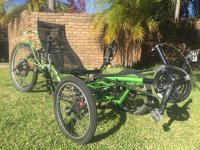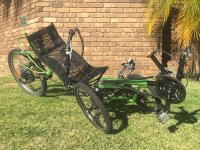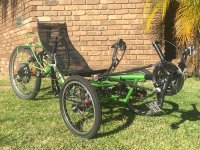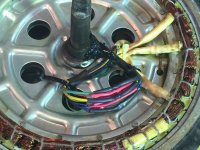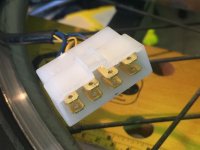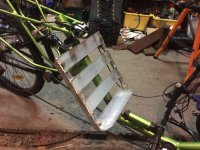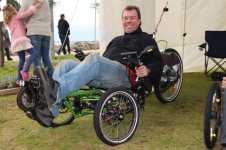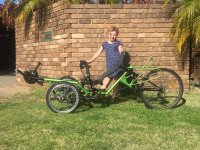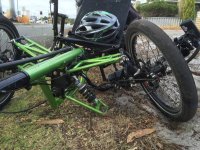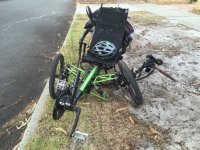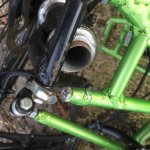Frakentrike said:
This connector is rated to 20A and 300V. Does it look like it should be able to handle power to my 1KW 48V hub motor?
Can't see the female contacts, but those look like a variation of "faston" connectors commonly used on small SLA terminals, whcih suck for actual contact surface area and for grip, especially if you have to plug/unplug them much (they get pried open and don't hold on anymore).
Or should I have gone for Anderson connectors or something?
Bullets are commonly chosen, as well. I no longer use ANY connectors on phase wires because I've had damaged connectors cause heating and then connector failure (or even wire insulation melting, that would ahve shorted phases and blown the controller if I hadn't been checking it). I solder them directly, with just enough free wire to service the wheel if needed.
I also don't use connectors for the halls, because of connection failures from corrosion (even here in "dry" Phoenix), vibration, etc. I solder those wires, too.
But I used to use Andersons (PP45), and I have also tried RC-type bullets of a couple of types/sizes. The Andersons were great for stuff I needed to plug/unplug frequently, especially under power, but they require wire be "loose" in teh back of it so the contact can float, and the wire cant' be pulling or twisting on it, so you can't tie down the wires anywhere near the contacts/shells, or you defeat their mating design. The bullets dont' have those problems, but they still let just enough water in there to get corrosion if they're not "gold plated", or after the plating scrapes off after enough connection cycles. They also don't all always unplug easily and I've actually ripped a wire apart inside it's insulation trying to get bullets apart on a roadside repair.

And it was still stuttering. *sigh*
I then tried a spare controller and that displayed exactly the same problem again. Drat.
Sounds like it's the wrong phase/hall combo, or a hall sensor has failed or has a wire problem. (broken wire internally, etc).
There's stuff in the wiki and I think the motor technology sticky index on how to test the hall sensors. Also on ebikes.ca.
I tested the resistance of the wheel to rotation by shorting out two then all three phases and found that the resistance to turning the motor by hand increased from no resistance to a fair bit of resistance with 2 shorted to quite heavy resistance when all three were shorted. From reading other ES forum posts I understand that should mean that the phases are not shorted anywhere along their length. Would that be correct?
Yes.


